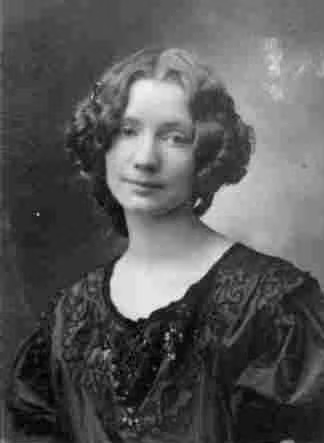
Table of Contents
Who Was Gerda Wegener?
Gerda Wegener was a pioneering artist whose life and work played a significant role in the early 20th-century art scene. Born in the small rural province of Hammelev, Denmark, on March 15, 1886, she grew up in Hobro, where her artistic inclinations emerged against the backdrop of her father’s career as a clergyman. At the age of 17, seeking broader opportunities, Wegener moved to Copenhagen to study at the Royal Danish Academy of Fine Arts. There, she honed her skills and embarked on a career that would see her achieve success as a fashion illustrator for prominent magazines, including Vogue, while also creating evocative erotic imagery of women.
Early Life, Marriage, and Art Career
Gerda Marie Fredrikke Gottlieb’s early life in Hobro was characterized by a yearning for artistic expression. Her move to Copenhagen marked a pivotal transition, where she not only cultivated her talents but also met and fell in love with fellow artist Einar Wegener. They married at ages 19 and 22, respectively, and soon after, Gottlieb began to establish her career. Her work received its first notable recognition in 1904 when it was exhibited at the Charlottenborg Art Gallery, although the event did not attract significant attention.
Wegener’s breakthrough came in 1907, when she won a drawing contest in the Danish newspaper Politiken. This accolade propelled her into the public eye and enabled her to secure commissions illustrating women’s fashion magazines, where she infused her work with an Art Deco sensibility. Wegener’s illustrations portrayed strikingly beautiful women adorned in stylish attire, characterized by short bobs, full lips, and almond-shaped eyes.
Unbeknownst to the public, the model for many of her fashion illustrations was her husband, Einar Wegener, who often posed in women’s clothing. These modeling experiences prompted Einar to explore his true gender identity, ultimately leading him to transition and adopt the name Lili Elbe. In the early 1930s, Elbe became one of the first documented individuals to undergo sex reassignment surgery.
The revelation that Wegener’s high-fashion depictions were representations of a man generated a significant scandal in Copenhagen, a city that struggled with conventional gender norms at the time. In response to the societal pressures, Gerda and Lili relocated to Paris in 1912, embracing a more liberal lifestyle and a vibrant artistic community. Their life together in Paris marked a transformative period for both, as they navigated the complexities of identity, art, and societal acceptance.
Lesbian Erotica Artwork
With her new identity as a lesbian in the avant-garde city of Paris, Wegener’s artistic expression took on a notably bold and risqué dimension. In addition to her portrait work within the fashion realm, featured in prominent publications such as Vogue, La Vie Parisienne, and the intellectually esteemed Journal des Dames et des Modes, Wegener began to explore themes of sensuality through her depiction of nude women in sexualized poses. Often categorized as “lesbian erotica,” these illustrations embodied the sensuality of the Art Deco movement and found their way into illicit art books. Her provocative paintings also appeared in controversial exhibitions, which sometimes incited public backlash.
Wegener embraced the notoriety and acclaim that accompanied her work. She hosted extravagant parties and established herself as a notable figure in both France and Denmark. However, her public success was not without repercussions. When Christian X, the King of Denmark, became aware of her marriage to Elbe—who had legally transitioned—the king declared their marriage null and void. In 1930, facing legal challenges stemming from the king’s decision, the couple amicably chose to separate.
Later Years and Death
After her separation from Elbe, Wegener married Major Fernando Porta, an Italian officer, aviator, and diplomat, relocating with him to Morocco. However, this marriage proved to be short-lived, culminating in divorce in 1936.
Throughout this period, Wegener maintained her support for Elbe, regularly sending flowers to encourage her during the latter’s recovery from a critical surgery intended to complete her gender reassignment. Unfortunately, the surgery did not proceed as hoped, and Elbe passed away in 1931. Wegener was profoundly affected by her death. Upon returning to Denmark in 1939, she found that her artistic style had fallen out of favor, resulting in financial struggles. Once a celebrated avant-garde artist, Gerda found herself creating inexpensive, hand-painted Christmas cards. Her final exhibition during her lifetime took place in Copenhagen in 1939, after which she passed away in solitude in 1940.
Books, Movies, and Exhibitions
The story of Wegener and Elbe continues to resonate in literature and film. Man Into Woman, edited by Niels Hoyer—a friend of both Wegener and Elbe—was published in 1933 and later republished in the mid-1950s. In 2000, author David Ebershoff fictionalized Elbe’s narrative in The Danish Girl, which was adapted into a film in 2015, starring Eddie Redmayne as Elbe and Alicia Vikander as Wegener. In November 2015, Wegener’s artwork was showcased at the Arken Museum of Modern Art in Copenhagen, further solidifying her legacy as a significant figure in the history of art.
